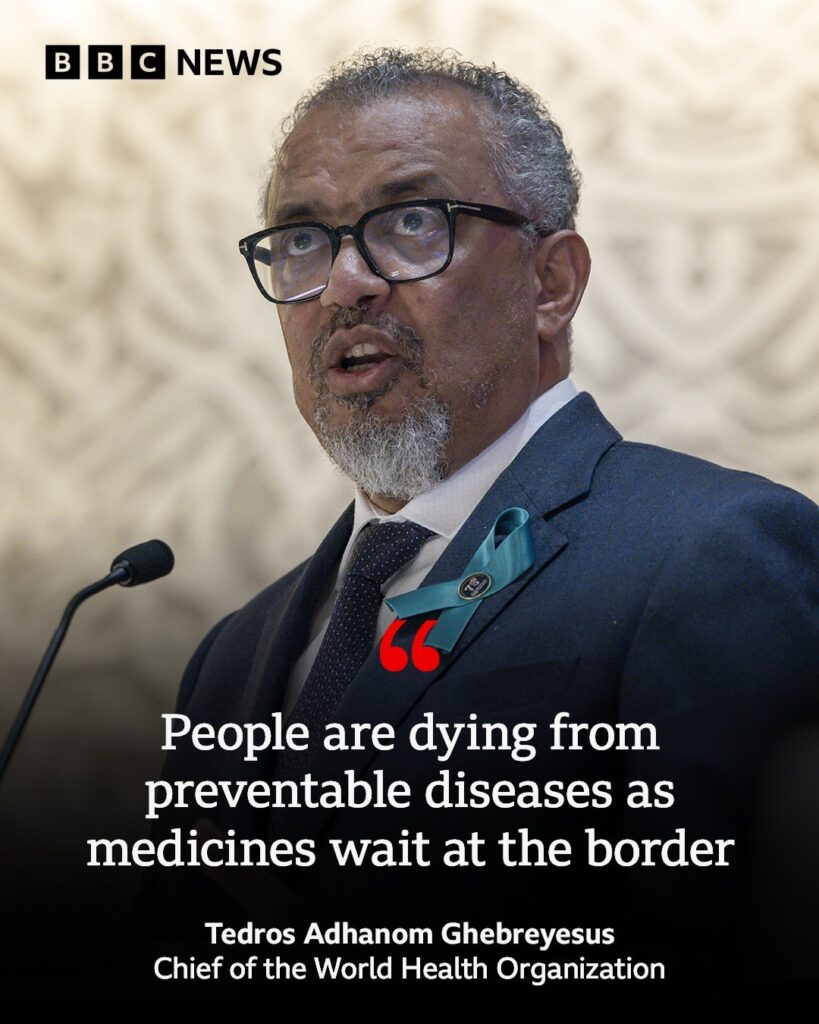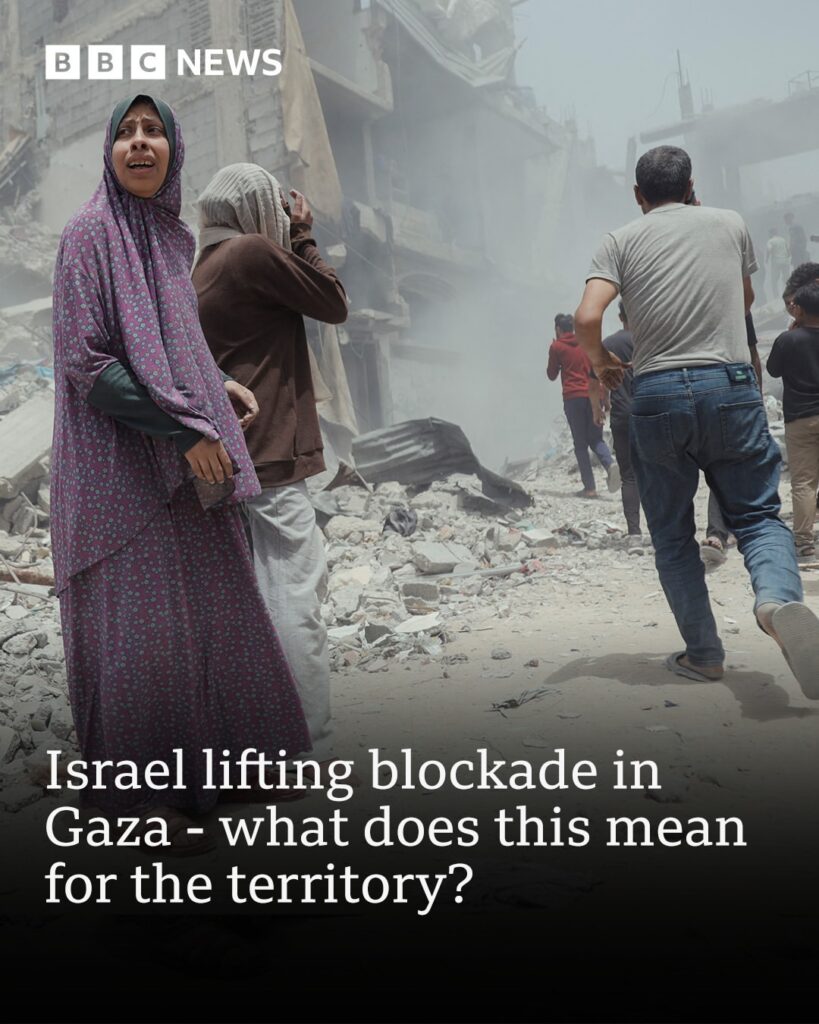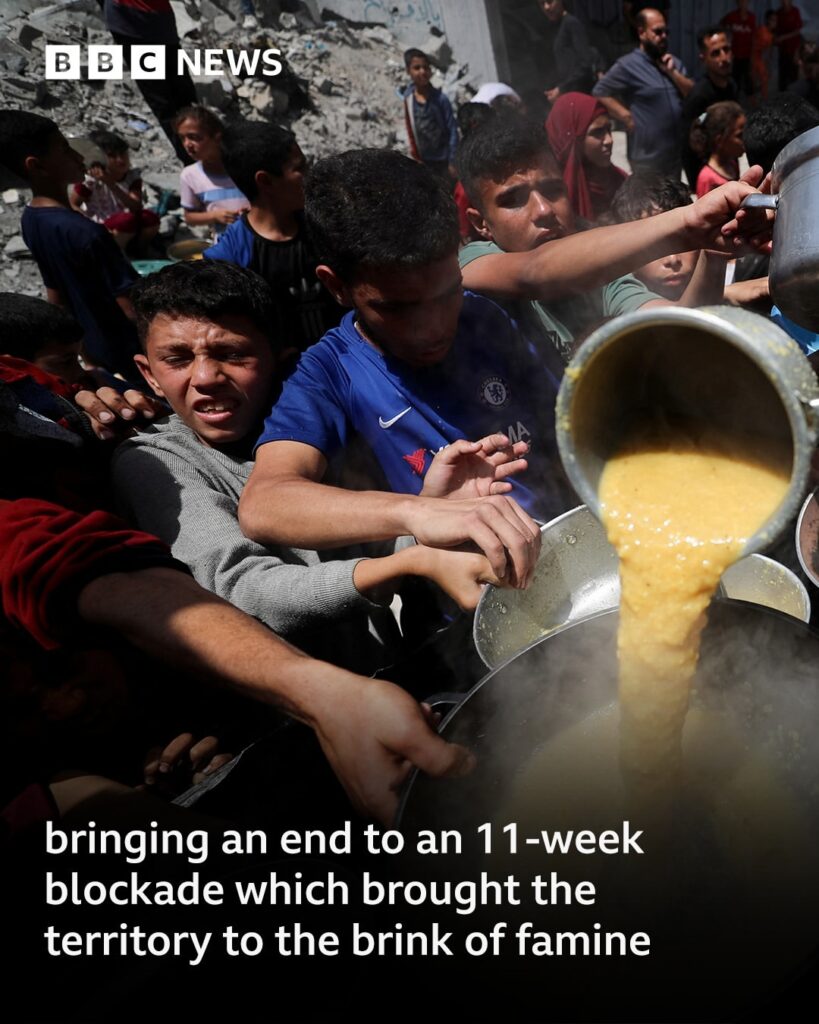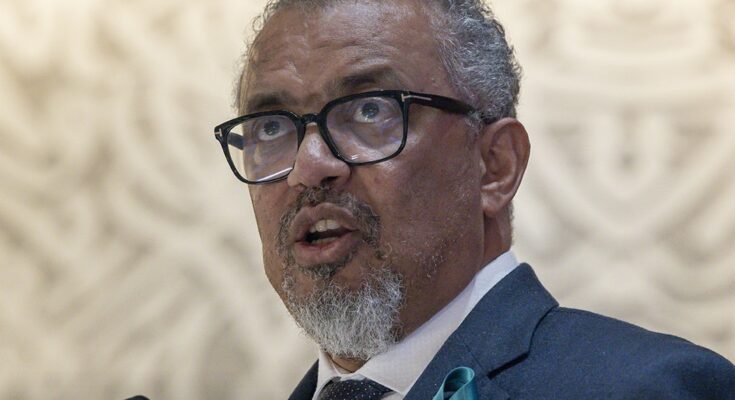
After nearly three months of a near-total blockade, Israel has announced that it allowed five United Nations trucks to deliver humanitarian aid into the Gaza Strip — a move that marks a small but significant shift in the ongoing humanitarian crisis gripping the region. The delivery, facilitated under intense international pressure, comes amid warnings from aid organizations and global leaders that Gaza is on the brink of catastrophe due to food shortages, a collapsing health system, and massive displacement.
According to an official statement released by the Israeli Defense Ministry’s Coordinator of Government Activities in the Territories (COGAT), the five lorries were cleared to enter Gaza through the Kerem Shalom crossing — the first such passage of UN aid trucks since the blockade was intensified nearly 11 weeks ago. The trucks, loaded with medical supplies, basic food items, and emergency sanitation kits, were handed over to the UN Relief and Works Agency (UNRWA) for immediate distribution in the most affected areas of the Strip.
“The State of Israel has permitted, under humanitarian grounds, a limited shipment of aid coordinated with the United Nations,” the COGAT statement read. “This operation was conducted in accordance with security assessments and under strict supervision.”
The delivery, though welcomed by the international community, has been widely criticized for being inadequate in scale. Humanitarian agencies have warned that five trucks represent a drop in the ocean compared to the needs of Gaza’s roughly 2.3 million residents, many of whom are now internally displaced, living in makeshift shelters or overcrowded UN schools with little access to clean water, electricity, or basic healthcare.
Philippe Lazzarini, Commissioner-General of UNRWA, said, “We appreciate the step taken by Israeli authorities to allow these trucks in, but the reality on the ground is grim. We need hundreds of trucks per day, not five every 11 weeks. The situation is not just dire — it is deteriorating by the hour.”

A Humanitarian Crisis Decades in the Making
The Gaza Strip, a narrow coastal enclave bordered by Israel and Egypt, has been under various levels of blockade since 2007, when Hamas took control of the territory. The most recent escalation of the blockade followed renewed hostilities between Israel and Hamas, which began in late 2024 and resulted in widespread destruction, including the leveling of entire neighborhoods, damage to hospitals and schools, and the displacement of hundreds of thousands of people.
In the wake of these hostilities, Israel cited national security concerns, including the need to prevent the smuggling of weapons and dual-use materials into Gaza, as justification for tightening restrictions on crossings. However, critics — including UN officials, humanitarian NGOs, and foreign governments — have argued that the blockade has amounted to collective punishment and has created untenable conditions for civilians.
In recent weeks, images and reports from inside Gaza have painted a grim picture: children suffering from malnutrition, makeshift clinics unable to operate due to lack of fuel, and families drinking contaminated water. According to the World Health Organization, over half of Gaza’s hospitals are no longer functioning, and the spread of waterborne diseases has risen sharply due to the breakdown of basic sanitation infrastructure.
The Israeli government, facing growing scrutiny, has insisted that it is not opposed to humanitarian aid per se, but rather concerned with the security risks associated with such deliveries. Israeli Prime Minister Benjamin Netanyahu has repeatedly stated that any aid entering Gaza must be thoroughly inspected and monitored to ensure it does not reach militant groups.
“We will not allow Hamas to rearm under the guise of humanitarian assistance,” Netanyahu said in a recent statement. “But we recognize the suffering of civilians and are committed to facilitating aid that genuinely reaches those in need.”

International Pressure Mounts
The move to allow the five UN lorries into Gaza comes amid intensifying diplomatic efforts by the international community to ease the humanitarian situation. The United States, the European Union, Egypt, and Qatar have all urged Israel to open more crossings and allow a sustained flow of aid into the territory. In a joint statement last week, several major donors warned that without immediate access for aid, Gaza could experience a full-scale famine within weeks.
US Secretary of State Antony Blinken reiterated Washington’s position during a recent visit to the region. “We fully support Israel’s right to self-defense,” Blinken said, “but we also must insist that basic humanitarian principles be respected. Innocent civilians must not bear the brunt of political and military conflict.”
While the five-truck delivery is seen as a positive gesture, aid organizations say it must be part of a larger, sustained humanitarian corridor. The UN has called for the establishment of an independent monitoring system that would allow for regular aid deliveries, while also addressing Israeli security concerns.
The Voices from Gaza
Inside Gaza, reactions to the aid delivery were mixed. For many residents, it was a symbol of hope — however fleeting — that the outside world had not completely forgotten them. Yet for others, it was a painful reminder of how little had changed.
“I saw the trucks come in,” said Amina, a 34-year-old mother of four living in Rafah. “We heard they had food and medicine, but we haven’t received anything yet. We are still living in a school building with 20 other families. My baby is sick, and the clinic has no medicine.”
For humanitarian workers on the ground, the situation remains frustrating. Limited fuel, damaged roads, and ongoing restrictions mean that even when aid enters Gaza, distributing it to those in need is a logistical nightmare.
“We are working around the clock,” said a UN aid coordinator who asked to remain anonymous for security reasons. “But the scale of need is immense, and we simply don’t have the resources or freedom of movement to reach everyone.”


The Path Ahead
While the delivery of five UN trucks into Gaza may represent a diplomatic opening, aid officials warn that it is nowhere near enough. The humanitarian situation in Gaza is not the result of a single conflict or event, but of years of structural deprivation exacerbated by blockades, political paralysis, and repeated military confrontations.
Calls are growing louder for a long-term solution — not only to ease the humanitarian suffering but to address the root causes of the crisis. This includes the political divisions between Hamas and the Palestinian Authority, the lack of a sustainable peace process between Israel and the Palestinians, and the broader regional instability that continues to fuel violence and despair.
For now, the people of Gaza wait. For water, for food, for medicine. For peace. And perhaps, most of all, for the world to act not just in words, but with real, sustained help.



